
To eat or not to eat, that is not the question
Copenhagen has decidedly turned into a global culinary destination with a focus on innovation, local produce and ethical practices
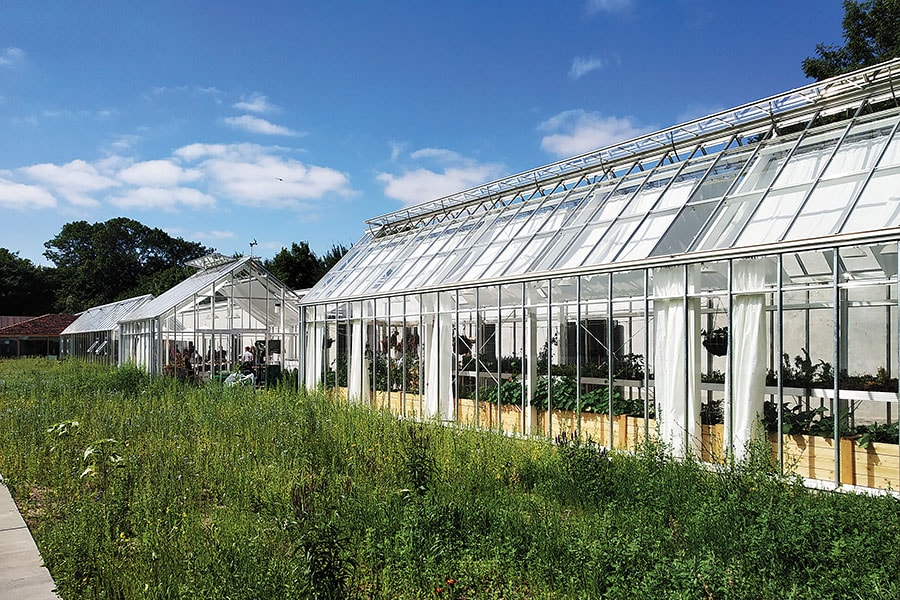 Noma 2.0 has a garden and three greenhouses, all connected by glass-enclosed walkways
Noma 2.0 has a garden and three greenhouses, all connected by glass-enclosed walkwaysImage: Joanna Lobo
My cab driver Alan is surprised. My list of places to visit in Copenhagen doesn’t include one that was crowned the world’s best restaurant four times since 2003. “You aren’t going to Noma? It’s so popular with the tourists,” he says. I tell him I can’t afford it. In response, he tells me his favourite Noma story. A friend of his was at the restaurant for dinner, and spotted Jon Bon Jovi at another table. Being a fan of the singer, she decided to take the help of his dining partner to get an autograph. Bon Jovi’s companion kept his word, and, at the end of her meal, she got her autograph. The waiter then told her that Bon Jovi paid for her meal as well. And that’s when Alan’s friend learnt that the singer’s dining partner was none other than his fellow American singer Bruce Springsteen. “She blames it on pregnancy hormones,” chuckles Alan. “But, what a story to tell her child!”
As it turns out, everyone in Copenhagen seems to have a story about Noma, chef and co-owner René Redzepi’s two-Michelin-star restaurant, which opened its doors in 2003. Even tour guides will point out old and new locations, in case you want to take photos.
To me, Noma’s true genius lies in its locally-sourced ethos, and in elevating Nordic cuisine and putting it on the global map. “Before its launch in 2003, chefs were working from a classic French standpoint, inspired by [late] Paul Bocuse, the revered French chef. He influenced Danish gastronomy from the 1970s till the ’90s. Eating out was predictable as most restaurants had similar things on the menu, and guests were conservative in their choices,” says Karsten Kroman, masterchef, owner of the All About Cooking school, and former secretary general of Bocuse d’Or, a biennial world chef championship in Denmark.
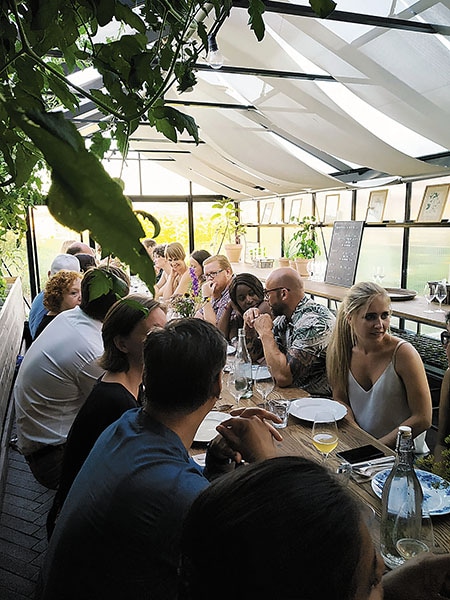
Gro Spiseri serves meals, community-style, inside a greenhouse
Image: Joanna Lobo
Image: Joanna Lobo
The gastronomic scene of Copenhagen changed about 15 years ago, when a new line of chefs took over existing restaurants or opened new ones. “They turned their backs on conventional French cooking traditions, and started inventing their own, heavily inspired by Ferran Adria and Heston Blumenthal and mixed with Japanese thinking and their own interpretations,” says Kroman.
Local ingredients and Nordic cooking became buzzwords. And while Redzepi played his part in revolutionising Copenhagen’s dining culture, Kroman says it wouldn’t be fair to “give them [Noma] all the fame”. There were others too, including chef and restaurateur Rasmus Kofoed of Geranium, a three-Michelin-star restaurant, and Ronny Emborg, the former executive chef of D’Angleterre Hotel known for his ‘Sensory Kitchen’ experience.
Today, Copenhagen has become the destination for those seeking exciting food being created by chefs experimenting with form, produce, cooking styles and ‘super-focussed’ menus. The city has 19 Michelin stars awarded to 15 restaurants, including Noma’s younger and more affordable sibling, 108, where Redzepi is a business partner. The city is also looking at sustainability and reduced food wastage: Denmark’s first-ever surplus food supermarket WeFood is in Copenhagen. “Ecology, sustainability and eating organic have become extremely significant to our food culture,” adds Kroman.
Alternative spaces
Good food can be found everywhere in Copenhagen and, these days, the focus has moved away from the central part of the city to the upcoming and hip suburbs of Vesterbro and the multi-cultural Nørrebro, thanks to more spaces becoming available and affordable. With cycling being a dominant feature of Copenhagen’s environment-friendly way of living, I found myself in a cycling tour that introduces me to one such neighbourhood, Refshaleøen, once home to the world’s largest shipyards. Refshaleøen is now filled with cute cafés, cosy restaurants and fun bars.
For more than a hundred years, the area was home to the world’s largest shipyard, Burmeister & Wain. When they went bankrupt in 1996, the space was abandoned. It once again came into prominence in 2010, when the country’s biggest metal festival, Copenhell, was held there. Eventually, the island of Refshaleøen got annexed into the larger Amager Island.
“Copenhagen is getting bigger, and we are becoming more and more people. Therefore, we need to make use of places outside the immediate city centre if we want to keep up. These will have a positive impact on the city’s culinary landscape, making it more diverse and colourful,” says chef Rasmus Munk. “Take, for instance, Refshaleøen. You won’t find space and buildings like this anywhere else. There’s literally room for anything and anyone, and that’s what makes this area so unique.” Munk is set to launch the second coming of his innovative modern restaurant, Alchemist, in what was originally a welding hall at the Burmeister & Wain shipyard.
We begin the cycling tour with a visit to Noma 2.0—it opened this February, after the original shut for a year—located on the border of Freetown Christiana, in an abandoned industrial building. The Bjarke Ingles-designed space has a garden and looks out onto Copenhill, a power plant designed by the same Danish architect. The roof of the power plant is being designed as a ski slope made of artificial turf; it’ll be open to skiers through the year.
Nearby is La Banchina, a modern Nordic café and restaurant opened in 2016, which is housed in what was once a ferry waiting room for shipyard workers. I sit by its pier, sipping artisanal coffee and watching people jump into the water to cool off; it is mid-July, and the city is enjoying a few surprisingly warm days with bright sun and clear skies. A hop-skip-jump away is Amass, headed by former Noma chef de cuisine Matthew Orlando. The restaurant is housed in a loft-style, industrial space and has its own terrace garden.
All four places have capitalised on the space afforded by the former shipyard buildings. After all, it’s what attracted the founders of the street food market, simply called Copenhagen Street Food, when they had to move from the now under-construction Paper Island. They chose Refshaleøen for its easy access (by boat, bike or bus), massive open spaces and buildings, and waterfront view.
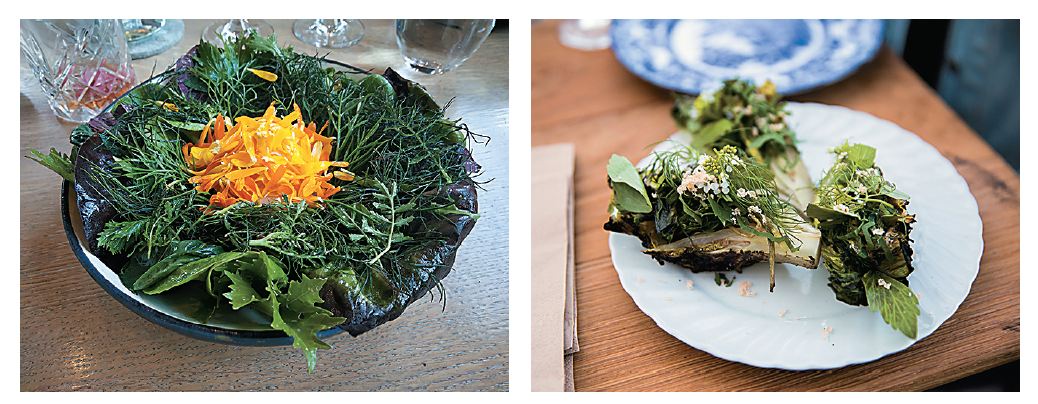
At 108, greens sourced from the Krogerup farm make their way into a salad with an almond oil sorbet, roasted seaweed paste, white currants and edible flowers; A romaine heart stuffed with a salad of garden herbs, grilled and brushed with yeast oil and finished with grated bortagga (roe) at Gro Spiseri
Image: Joanna Lobo
Image: Joanna Lobo
Reffen—a no-cash street-food market—opened this May, with a focus on sustainable food, craftsmanship and culture. It has 54 food stalls, food trucks, bars and workshops spread over 4,000-square foot outdoor space. The stalls are made of old shopping containers.
Reffen is a shining example of how Copenhagen approaches its food. The focus is on ‘reduce and reuse’, sustainability and using organic, free-range and local ingredients wherever possible. “It’s not just about the money. We want to support mama and papa businesses, and their dreams. It’s about being inclusive in dealing with guests. Everything is out in the open: You can watch your food being prepared, and ask questions about what goes into it, and where it comes from,” says Dan Husted, creative director, of Reffen.
Reffen’s selling points are its affordability and variety. I sample a refreshing Peruvian ceviche, washed down with chicha morada, a drink made of purple corn, pineapple and cinnamon; organic cheesecake made with skyr (an Icelandic cultured dairy product); and domodar (South African peanut stew) with Gambian ginger juice. Everything is served in recyclable containers, and there are plenty of vegetarian, vegan and gluten-free options. “Here, 80 percent of the stalls have a vegetarian option, sometimes vegan. It’s the new trend,” adds Husted.
“Copenhagen is turning seriously green, not just with its power supply but also its vegetables,” says Kroman, who has added two vegan and three vegetarian menus to his cooking school, thanks to spiralling demand. (With more than 40 percent of Denmark’s energy supply coming from wind power, Copenhagen aims to become carbon neutral by 2025.)
Meals to share
A better look at this trend can be gauged by the popularity of Denmark’s first rooftop farm, ØsterGro. The 600 square metre organic urban farm is located five floors above an old car auctioneer in Østerbro. “We started this because we wanted to show how food is made even if you are in an urban environment, and talk about farming and why we should support local farming more,” says Kristian Skaarup, one of the founders.
A better look at this trend can be gauged by the popularity of Denmark’s first rooftop farm, ØsterGro. The 600 square metre organic urban farm is located five floors above an old car auctioneer in Østerbro. “We started this because we wanted to show how food is made even if you are in an urban environment, and talk about farming and why we should support local farming more,” says Kristian Skaarup, one of the founders.
The farm has a restaurant, Gro Spiseri, which uses the edible flowers, herbs and seeds that it grows. There are three to four chefs who decide the menu, which changes about every two weeks and according to season. The meals happen at a single community-style table in the greenhouse, which is heated up by a multifunctional oven in the kitchen.
My seven-course meal includes mini pita stuffed with a thinly sliced steak, fresh Danish cherry cream and arugula; salted and grilled monkfish tail with black currant sauce and Icelandic seaweed; house made ricotta with garden salad seasoned with yeast flakes and green seaweed; glass kohlrabi served raw, salted, pickled; salt baked fish with Danish potatoes and a sauce made of fennel tops; and whipped goat cheese mousse with reduced honey and a currant compote.
At the meal, I learn that the Danish word for food is ‘mad’, a fitting word to describe the city’s dining experiences. Gro Spiseri’s is easily one of the best: A gourmet meal focussed on organic and fresh produce, seated in a greenhouse and watching the sun set.
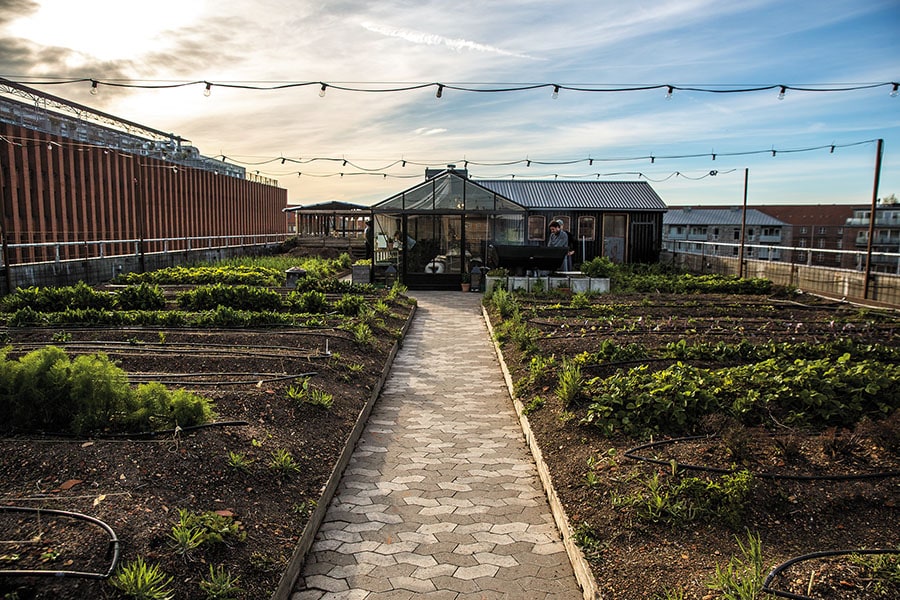 ØsterGro is a 600 square metre organic urban rooftop farm, the first in Denmark
ØsterGro is a 600 square metre organic urban rooftop farm, the first in DenmarkImage: Joanna Lobo
Of all the places I sampled, my favourite has to be Absalon, the former church turned community centre. The founder of Copenhagen’s Flying Tiger stores, Lennart Lejboschitz, bought the church in 2014 and transformed it into a colourful community house, where every evening a fællesspisning (community dinner) allows people to enjoy an affordable social dining experience. The menu changes weekly and has just one item—a salmon pie, or chili, or tagine, and such like. “Absalon offers affordable yet quality dining experience, but, in addition, a social experience that we believe is as much an attraction as the food is,” says Martin Lærkesen, general manager. Absalon is one of a few community kitchens that Copenhagen has, but is better known because it more than just a kitchen. A meal here costs around 50 danish krone ($8), the price of a starter in regular restaurants.
The next course
In a few months, the city will witness possibly its most innovative dining experience at Refshaleøen: Chef Rasmus Munk’s Alchemist 2.0 will offer a “sensory and holistic dining experience combining food, art, theatre, technology, science, and hospitality”. The food will have much of the molecular theatrics Munk is known for, but with an ethical perspective, and the dining experience will include actors and installation artistes.
In a few months, the city will witness possibly its most innovative dining experience at Refshaleøen: Chef Rasmus Munk’s Alchemist 2.0 will offer a “sensory and holistic dining experience combining food, art, theatre, technology, science, and hospitality”. The food will have much of the molecular theatrics Munk is known for, but with an ethical perspective, and the dining experience will include actors and installation artistes.
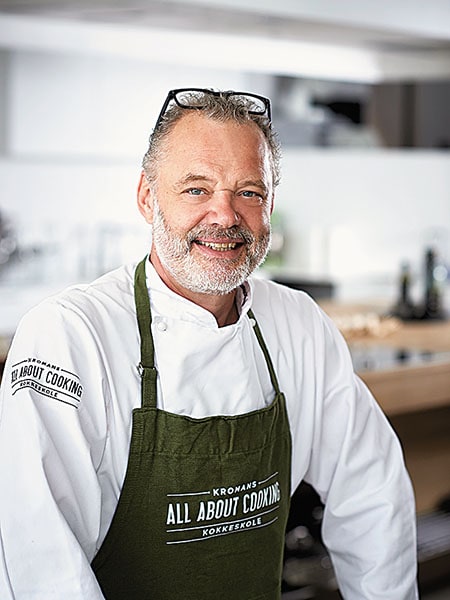
“ Ecology, sustainability and eating organic has become extremely significant to our food culture.”
Karsten Kroman
“The dining experience at Alchemist is multi-layered, starting on the plate with tasty, high-quality ingredients and skillful preparation,” says Munk. “It extends beyond the plate to the immediate surroundings; the physical appearance and presence of the room and interiors. And finally, it transcends time and space and is likely to initiate and support the debate on social and ethical issues.” Munk wants to send a message with his food, like Redzepi of Noma did to promote eating according to season, and Matt Orlando of Amass did by cooking with all the byproducts they generated to reduce wastage.
At the old Alchemist, one of Munk’s signature dishes was a lamb heart tartare, presented inside a lamb heart (sliced open), and a bloody sauce poured over the dish from an intravenous bag. This was served with a folder containing a donor card, urging guests to consider organ donations. “I believe that when you’re a chef at the level we’re aiming for at Alchemist, you have an obligation to do more than just cook and serve delicious food. Food is a brilliant medium to communicate messages, heavy or light,” he says.
Copenhagen might have morphed into a culinary destination. But the message it is sending out about food goes well beyond the kitchen.
The writer travelled to Copenhagen on the invitation of the Danish tourism board
(This story appears in the 30 November, -0001 issue of Forbes India. To visit our Archives, click here.)
X




